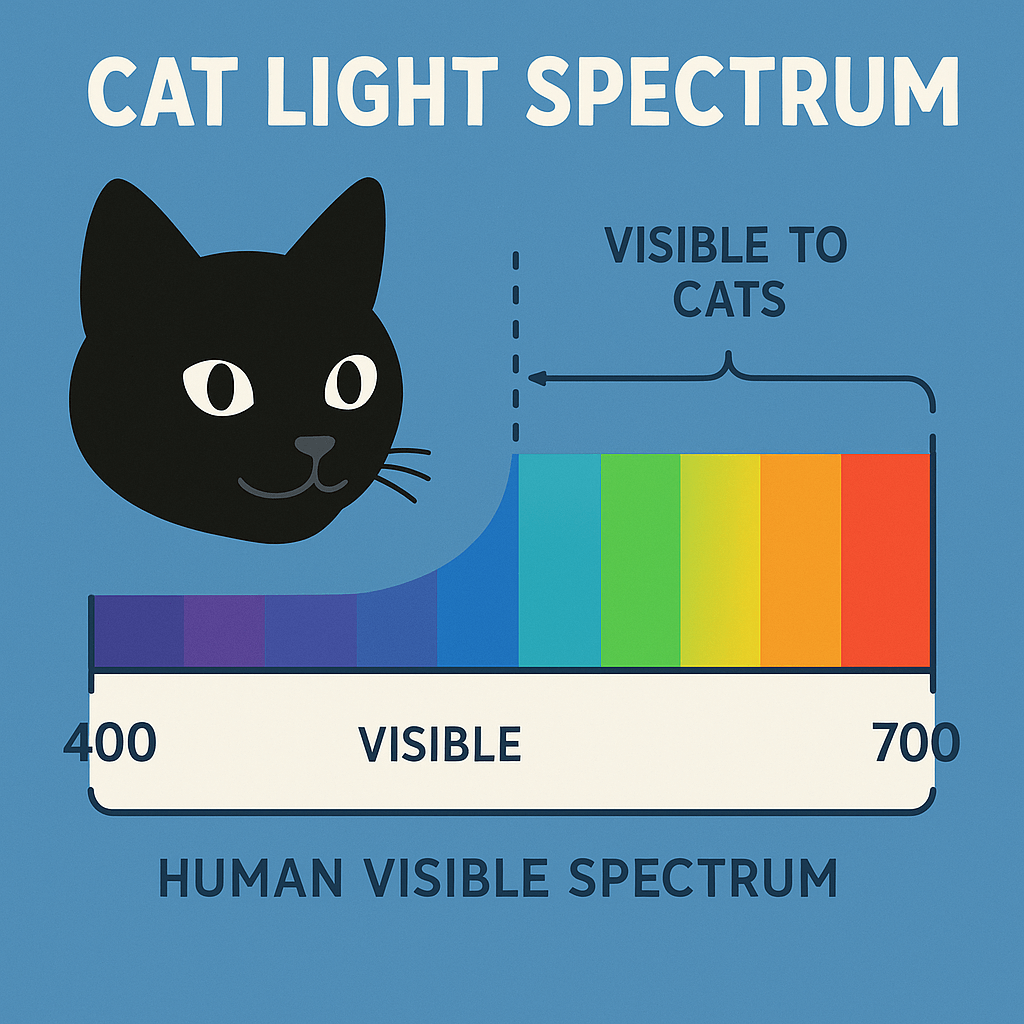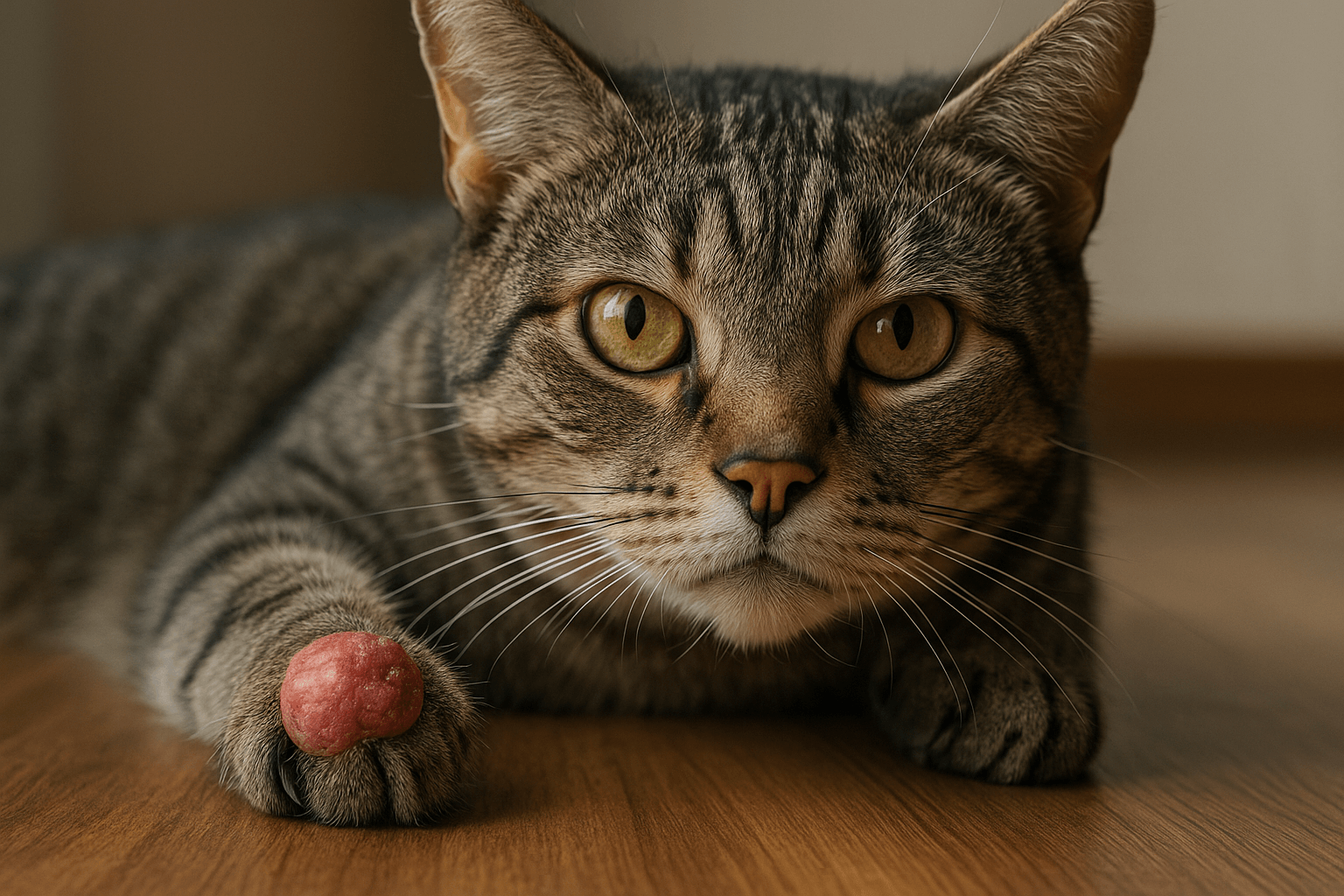Understanding the Cat Light Spectrum: How Cats See the World
Cats are fascinating creatures, known for their keen senses and unique way of perceiving the world around them. One of the most intriguing aspects of feline biology is their vision, particularly how they process light and color. The cat light spectrum refers to the range of wavelengths cats can detect, which differs significantly from human vision.
While humans see a broad spectrum of colors, cats experience a more limited palette but excel in low-light conditions. Understanding how your cat perceives light not only deepens your appreciation for their abilities but also helps you create an environment that suits their visual needs. Let’s explore the science behind the cat light spectrum and what it means for your furry companion.
Expert Insight: Why Cats Cannot See Infrared Light
“Cats are warm-blooded mammals, and warm-blooded creatures do not have infrared vision. If mammals like cats and humans could see infrared light, their body heat would create massive interference, meaning their eyes would see a world of temperature instead of color.”
How the Cat Light Spectrum Differs from Human Vision
Cats and humans perceive light differently due to variations in eye structure and photoreceptor cells. These differences shape how each species experiences the world visually.
Fewer Color Receptors:
Cats have fewer cone cells in their retinas, which limits their ability to see vibrant colors. They primarily perceive blues and greens but struggle with reds and yellows.Superior Night Vision:
Cats possess a high number of rod cells, enabling them to see in dim lighting up to six times better than humans. This makes them excellent nocturnal hunters.Tapetum Lucidum:
A reflective layer behind the retina, called the tapetum lucidum, enhances their night vision by reflecting light back onto the photoreceptor cells.Limited Depth Perception:
Cats have a narrower field of binocular vision compared to humans, which affects their depth perception and spatial awareness.Wider Field of View:
With a field of view spanning approximately 200 degrees (compared to 180 degrees in humans), cats can spot movement from the corners of their eyes more effectively.
These adaptations highlight how cats prioritize functionality over aesthetics, allowing them to thrive in diverse environments.

The Role of Light Spectrum in Feline Behavior
The cat light spectrum influences not only how cats see but also how they behave in various lighting conditions. Understanding this connection can help you better cater to your cat’s needs.
Hunting at Dawn and Dusk:
Cats are crepuscular hunters, meaning they are most active during low-light hours when their vision is optimized for spotting prey.Attraction to Moving Objects:
Cats are highly sensitive to motion in low light, thanks to their abundance of rod cells. This explains their fascination with toys that mimic prey behavior.Preference for Dim Lighting:
Cats often seek out dimly lit areas for rest or relaxation, as bright lights can overwhelm their sensitive eyes.Avoidance of Bright Colors:
Since cats cannot distinguish certain colors like red or orange, they may ignore objects or toys in these hues unless they move.Adaptation to Artificial Light:
Prolonged exposure to artificial lighting can disrupt a cat’s natural circadian rhythm, affecting sleep patterns and behavior.
By aligning your home environment with your cat’s visual preferences, you can enhance their comfort and well-being.
Check this guide 👉How to Clean a Cat Eye Infection: Best 7 Health Tips!
Check this guide 👉Understanding Cat Eye Surgery Costs: Best 7 Expert Tips!
Check this guide 👉Understanding Cat Eye Cancer: Best 7 Expert Tips!
Human Vision Traits | Cat Vision Traits |
|---|---|
Broad color spectrum perception | Limited to blues and greens |
Poor night vision | Excellent low-light visibility |
Narrow field of view (180°) | Wide field of view (200°) |
Strong depth perception | Moderate depth perception |
No tapetum lucidum | Reflective tapetum lucidum present |
Tips for Enhancing Your Cat’s Environment Based on Their Light Spectrum Needs
Creating a cat-friendly space involves considering how your feline friend perceives light and color. Here are some practical tips to optimize their surroundings.
Use Blue and Green Toys:
Choose toys in shades of blue and green, as these colors are easier for cats to see and interact with.Provide Dim Lighting Areas:
Set up cozy resting spots in dimly lit corners where your cat can retreat during bright daylight hours.Incorporate Motion-Based Activities:
Use interactive toys that mimic prey movements to engage your cat’s heightened sensitivity to motion in low light.Limit Artificial Light Exposure:
Avoid leaving bright lights on overnight to prevent disrupting your cat’s natural sleep cycle.Install Window Perches:
Place window perches near natural light sources so your cat can bask in sunlight while observing outdoor activity.
By tailoring your home to suit your cat’s visual preferences, you can enrich their daily life and strengthen your bond.
Common Misconceptions About the Cat Light Spectrum
Several myths about cat vision persist, leading to misunderstandings about their capabilities. Clearing up these misconceptions helps us better appreciate our feline companions.
Cats Can See in Complete Darkness:
While cats have superior night vision, they still require minimal light to see. Total darkness leaves them just as blind as humans.Cats Are Completely Colorblind:
Contrary to popular belief, cats can see some colors, particularly blues and greens, though their range is limited compared to humans.All Cats Have Identical Vision:
Individual cats may vary slightly in their visual acuity based on breed, age, and overall health.Bright Lights Improve Cat Vision:
Bright lights can actually overwhelm a cat’s sensitive eyes, causing discomfort rather than improving clarity.Cats Rely Solely on Vision for Hunting:
While vision plays a crucial role, cats also depend on their sense of smell and hearing to locate prey.
Understanding these facts ensures we provide accurate care and enrichment for our cats.
How Light Affects a Cat’s Mood
Light plays a significant role in regulating your cat’s mood and energy levels. Adapting your home’s lighting can promote positive behavior and emotional well-being.
Natural Light Boosts Energy:
Exposure to natural sunlight encourages playfulness and exploration throughout the day.Dim Lighting Promotes Relaxation:
Soft, warm lighting creates a calming atmosphere, perfect for napping or unwinding after playtime.Blue Light Disruption:
Excessive exposure to artificial blue light from screens or LED bulbs can interfere with your cat’s sleep patterns.Seasonal Changes Impact Activity Levels:
Reduced daylight during winter months may lead to decreased activity, requiring additional stimulation indoors.Consistent Lighting Schedules:
Maintaining a predictable lighting routine supports your cat’s internal clock and reduces stress.
Balancing natural and artificial light ensures your cat remains content and balanced year-round.
Choosing the Right Lighting for Your Home
Selecting appropriate lighting for your home benefits both you and your cat. Thoughtful choices enhance safety, comfort, and overall enjoyment.
Opt for Adjustable Lighting:
Dimmer switches allow you to adjust brightness levels according to your cat’s preferences and daily activities.Avoid Harsh Fluorescent Lights:
These lights can irritate your cat’s eyes and should be replaced with softer alternatives.Include Task Lighting:
Focus lamps on specific areas, such as feeding stations or litter boxes, to ensure visibility without overwhelming brightness.Use Warm-Toned Bulbs:
Warm white or yellow bulbs mimic natural sunlight and are gentler on your cat’s eyes than cool-toned options.Minimize Shadows and Glare:
Proper placement of lights reduces shadows and glare, creating a safer and more navigable environment.
Thoughtfully designed lighting fosters a welcoming and functional space for your cat.
Fun Facts About Cat Vision
Cats’ unique vision has inspired countless studies and anecdotes. Here are some intriguing facts about how they perceive the world through the light spectrum.
Cats Have a Third Eyelid:
Known as the nictitating membrane, this protective layer shields their eyes while maintaining moisture and cleanliness.Peripheral Vision Excels:
Cats’ wide field of view allows them to detect movement from nearly any angle, giving them an edge as hunters.They Can Detect Rapid Movements:
Cats process fast-moving images far better than humans, making them adept at tracking fleeing prey.Color Blindness Isn’t Total:
While cats don’t see the full spectrum, they can distinguish between certain shades, especially those in the blue-green range.Their Eyes Change Shape in Different Light:
In bright light, a cat’s pupils constrict into narrow slits, while in dim light, they expand to large circles to maximize light intake.
These fun facts highlight the incredible adaptability and complexity of feline vision.
Frequently Asked Questions About the Cat Light Spectrum
Can cats see ultraviolet light?
Research suggests that cats may have some sensitivity to ultraviolet light, though its impact on their daily lives is still being studied.
Why do cats’ eyes glow in the dark?
The tapetum lucidum, a reflective layer in their eyes, causes this glowing effect by bouncing light back onto the retina.
Do cats get headaches from bright lights?
Bright lights can cause discomfort and stress in cats, similar to how humans react to harsh lighting.
Should I use colored bowls for my cat?
Bowls in neutral tones or shades of blue and green are ideal, as cats can easily identify them.
How does age affect a cat’s vision?
Older cats may experience reduced visual acuity, difficulty seeing in low light, or cloudiness in their lenses due to cataracts.
Embracing Your Cat’s Unique Perspective on Light
The cat light spectrum offers a glimpse into the extraordinary ways our feline friends experience the world. From their exceptional night vision to their preference for muted colors, understanding their visual capabilities allows us to create a harmonious living space tailored to their needs. By respecting their natural behaviors and adapting our homes accordingly, we can ensure our cats lead happy, healthy lives while strengthening the bond we share with them. Whether through thoughtful lighting choices or engaging playtime activities, every effort counts toward celebrating the marvels of feline vision.
Cuterebra Larvae in Cats: Best 7 Expert Tips! – Expert advice on signs, treatment & prevention of this rare but serious feline parasitic infestation.
Cuterebra Larvae in Dogs: Best 7 Expert Tips! – Expert advice on signs, treatment & prevention of this rare but serious parasitic infestation.
Cat Tumor on Paw: Best 7 Expert Tips! – Expert advice on signs, diagnosis, treatment & care for feline paw tumors.
Panacur Side Effects in Dogs: Best 7 Expert Tips! – Safe usage, common reactions & when to call the vet.




